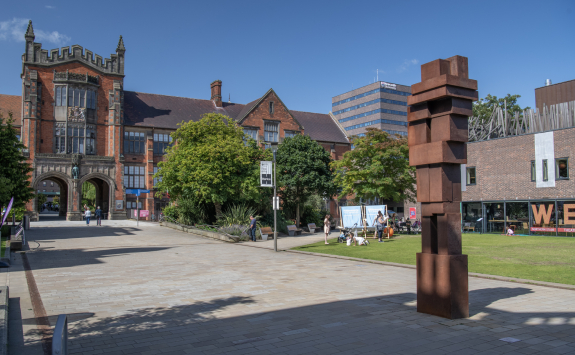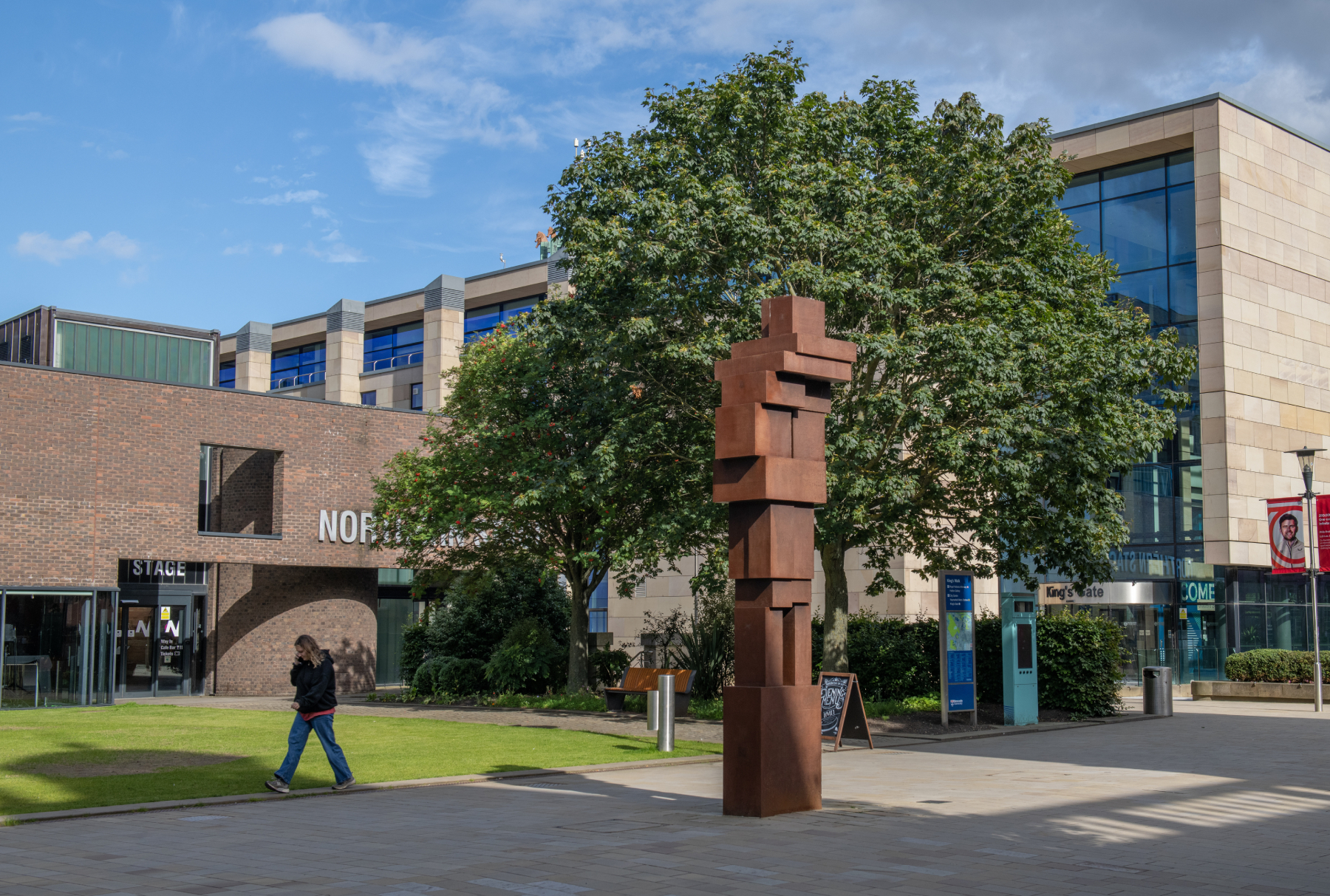Clasp by Antony Gormley
The artist
Antony Gormley received the Turner Prize in 1994 and the South Bank Prize for Visual Art in 1999. He is best known for the 'Angel of the North' in Gateshead and 'Another Place' at Crosby Beach in Liverpool. He received an honorary doctorate from Newcastle University in 2004.
You can find his sculptures in museums, in collections, and in permanent sites all over the world. In 2015, the University's Hatton Gallery held the 'Space Stations' exhibition, showcasing some of his drawings from 2002 – 2014.
The acknowledgement of instability and inevitable jeopardy, but, at the same time, connection. The need to stand and to hold. To touch the world, the future, another body.
The sculpture
Gormley's 'Clasp' is a 4.4-metre-high cast iron sculpture. It depicts two bodies holding each other and is part of the artist's 'Double Blockworks' series. In this series, rectilinear blocks replace anatomy using stacking, cantilevers and propping. These techniques create a sculpture that juggles the dynamic and the stable.
The 'Double Blockworks' are a radical departure from Gormley's normal practice of isolating a single body in space. For the artist, the doubled figures embody "matter as a continual dance of possibility between emergence and entropy".
Many of the 'Double Blockworks' are based on scans of the artist clasping a previously made 'Blockwork'. This represents an acknowledgement of his relationship with the art of sculpture.
Clasp is on loan from the sculptor and forms part of the University's Art on Campus programme.
.jpg)
The artist's inspiration
Inspiration for the piece comes from architectural structures. They include the Cyclopean walls of Mycenae, the Trilithons of Stonehenge and the buildings of Mies van der Rohe.
These essential forms of architecture translate through modernism into a structure. Within this structure, each piece plays its part in a whole where dead weight becomes active.
The sculpture is of 18 individual blocks and cast as one single element in spheroidal graphite iron. The surface colour of the sculpture will continue to naturally evolve over time. This is an organic response to environmental conditions.
Artist: Antony Gormley
Location: King's Walk, between the Students' Union and Northern Stage

